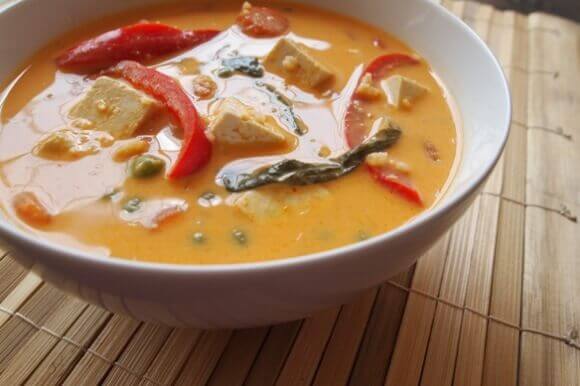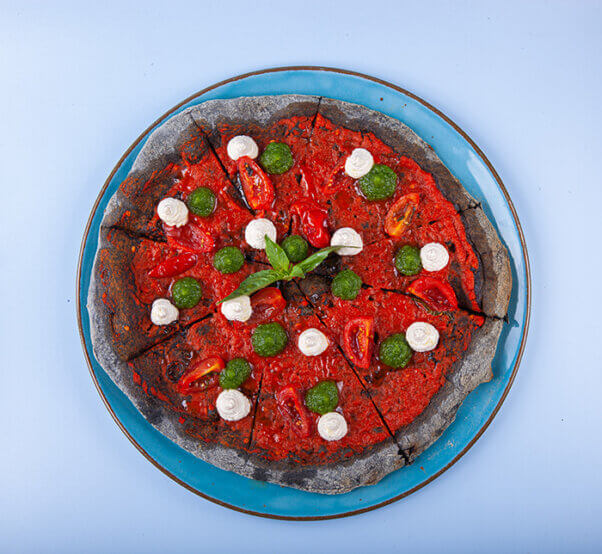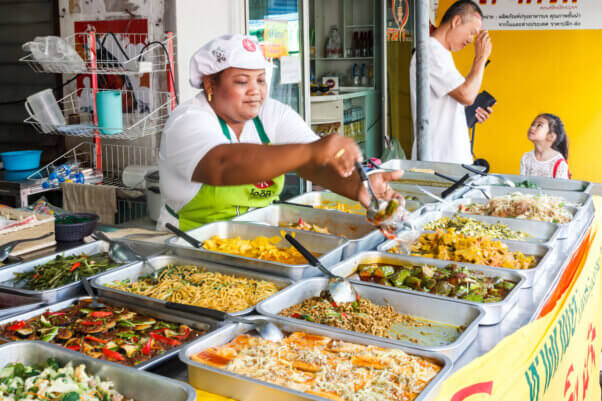From forksoverknives.com
Jet-setting vegan foodies, take note: Evolving Vegan, the food and travel series hosted by Mena Massoud, is now streaming on Peacock. The series follows the Aladdin star as he eats his way through North America and beyond, digging into cheesesteaks in Philadelphia, rolling sushi with a master chef in Tokyo, and revisiting favourites in his hometown of Toronto. Along the way, he interviews chefs for their perspectives on the evolution of plant-based cuisine.
Massoud’s own path to veganism started almost a decade ago, when he and two friends began gradually eliminating animal products because of environmental concerns. “We approached it very slowly,” he recalls. “The more we did, the more we felt better. I personally started seeing a difference in my workout regimen and my body that I had never seen before.”
What began as a choice for the planet soon grew into a commitment to his own well-being. That personal evolution inspired the title of his show and still shapes the way he approaches veganism today. “Everybody’s journey is different… I encourage people to be non-judgmental and try to be more empathetic,” Massoud says.
Read on for more from our recent conversation with Massoud, where we discuss how his perspective on veganism has evolved since launching his show, what makes a city a standout as a plant-based destination, his top tips for finding great vegan food while traveling, and more.
How has your perspective on plant-based food evolved since you first started working on the show?
Mena Massoud: When vegan [food] had a boom in the markets back in 2019 … what became really popular was the mock meats. Now I think we're seeing people prioritize health and whole foods over vegan [highly processed foods]. … My view has also changed since I started the show and since I went vegan back in 2015, to focusing on healthy alternatives.
You can have a mock meat burger once a week and probably be fine, but if you're having ultra-processed food like that every day, it's likely not good for you. So that's kind of how my view has changed. I’ve gravitated more toward whole foods and healthy plant-based foods instead of just imitations.
Have you seen that shift reflected in the restaurants you’ve visited for the show?
Massoud: There’s a mix of everything, and everybody has their own style and agenda. Some chefs just want to get people into vegan eating, and the easiest way to do that is to make something that tastes really good and reminds them of meat; often that is processed. In places like Vancouver, where they have a plethora of fresh produce, I didn’t see a lot of processed meals. They really relied on whole foods that they got from the local environment. You see that in LA, as well, because there’s so much fresh produce. So, it depends on the city, the chef, and a lot of things, but I think there’s a good mix out there.
What makes a city stand out as a plant-based destination?
Massoud: One thing is whether it surprises you versus your expectations. For example, Philadelphia shocked me. The restaurant Pietramala is one of the best vegan restaurants in the world that I’ve ever tried. That chef really has a unique point of view—everything he makes is from the vision of fermentation and fire—and that makes for some incredible food.
Another [factor] is the availability of fresh produce and unique vegetables and fruits. In Miami, I tried fruit I’d never seen before. And Vancouver and California, like I was saying, have a plethora of fresh produce, which makes for an incredible plant-based city as well. … Portland is another standout. The chefs there are kind of avant-garde. They're not afraid to experiment.
You’ve filmed in many cities. Any favorite moments from the Los Angeles shoot?
Massoud: LA is special because I lived there for five years and had personal relationships with some of the restaurants we visited, like H.O.P.E. Vegan. One of my best friends, [celebrity trainer] Kollins Ezekh, introduced me to the chef-owner, Maud. So for the show, we did this cool segment where all three of us went boxing [at Ezekh’s gym] and then went to Maud’s restaurant. We got to hang out basically all day.
Also, my film crew was all from Toronto, and getting to take them to some of my favourite spots in LA was really nice. I took them hiking in Runyon Canyon.
What’s your top advice for traveling as a vegan?
Massoud: Do your research beforehand. And hit up the locals. All you need is one or two good vegan spots before you arrive, and then ask people there where they go. You’ll find some hidden gems that way. When we went to Osaka (not for the show), we found a tiny vegan spot with six seats, asked everyone there where else they liked to eat, and ended up with incredible recommendations.
What do you hope people take away from Evolving Vegan?
Massoud: There hasn’t been a show like this before. It’s hard to convince a network to do a vegan show. People still think vegan is niche, but more people than ever are [incorporating plant-based meals] into their diets. The more people that do that, the bigger impact we can make.
Also, I’ve always been a foodie, even before going plant-based, and I wanted to make a show that foodies could enjoy. I think we’ve done that. It’s a show that everybody can enjoy, not just vegans.





